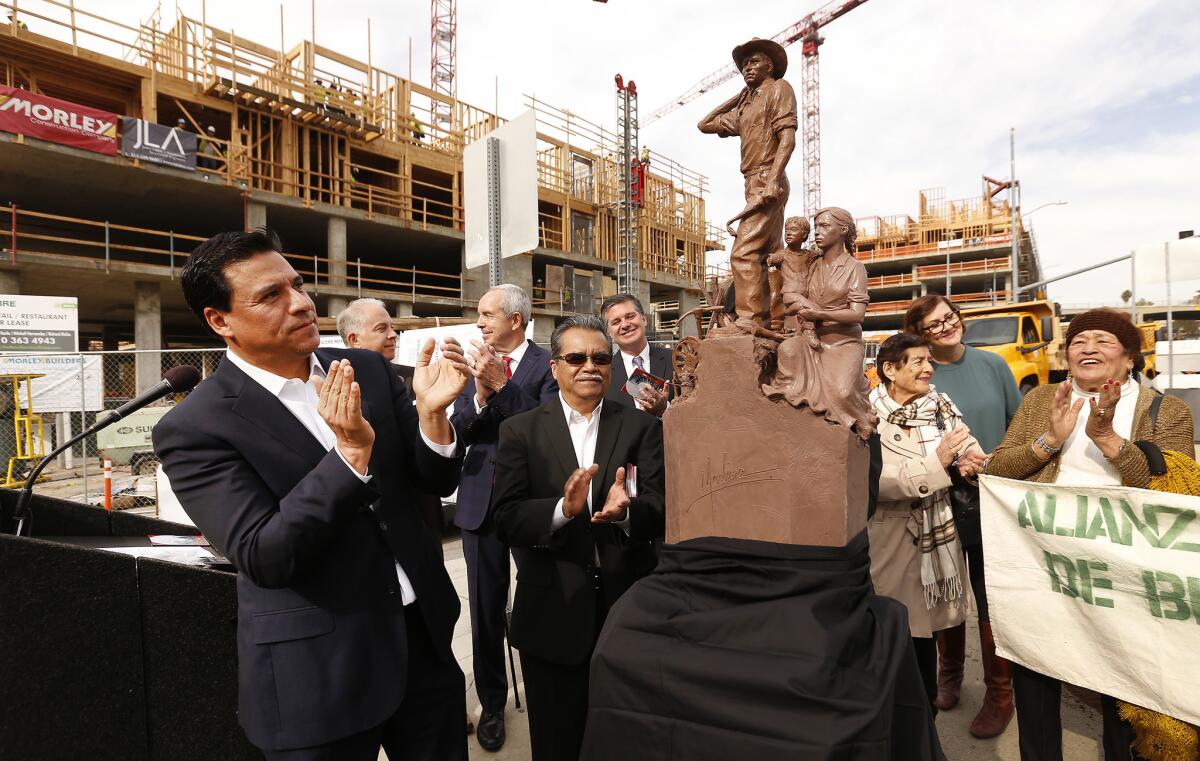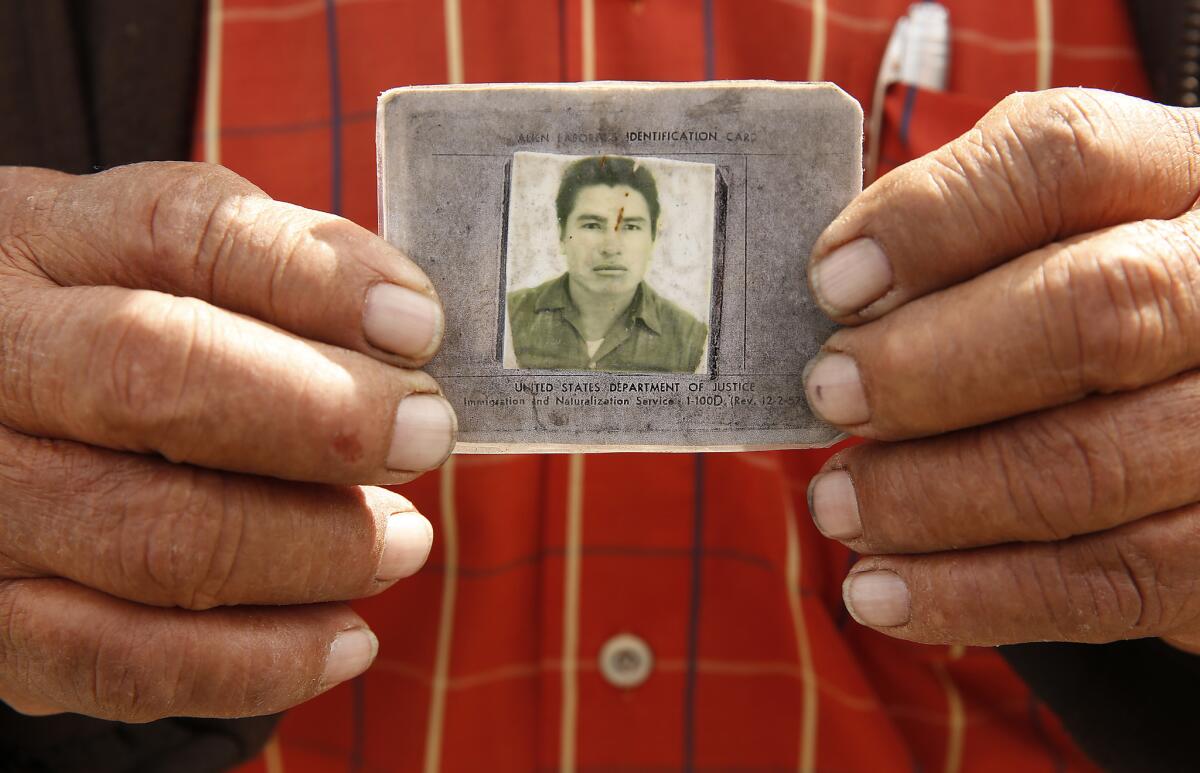Amid rising tensions between President Trump and California, L.A. honors the braceros

- Share via
Decades ago, the United States eagerly welcomed more than 1 million Mexican nationals across the border.
Through an agreement between the U.S. and Mexican governments, the temporary workers, known as braceros, came under a program to help fill labor shortages during and after World War II.
Almost 80 years after the Mexican guest worker program was implemented, and in the middle of a tense standoff between California and the Trump administration over illegal immigration, Los Angeles is honoring these workers with a 19-foot monument that will be the centerpiece of a new plaza near Olvera Street.
Still days away from his first visit to California as president, Trump felt very much present.
“It is great to see we’re establishing not only the bracero statue, but also the plaza to recognize diversity, to respect diversity in a time that we’re being attacked by our president,” said Councilman Jose Huizar. “When our president calls many of these Mexican immigrants thieves, rapists, murderers and says they’re not sending their best, let us remind him that many braceros came here and worked hard and built this country.”
The event came on the heels of the Trump administration’s announcement that it would sue California over its “sanctuary” laws, the latest in rising tension between the state and the president. Trump has previously criticized California police as being soft on street gangs and suggested pulling federal immigration agents out of the state.
Immigration officials have vowed more sweeps because of state and local sanctuary laws aimed at shielding those who are here illegally. The White House said the Justice Department is reviewing recent actions of Oakland’s mayor, who alerted residents about upcoming sweeps.
On Thursday, Huizar grew emotional as he recounted the story of the braceros, named for the Spanish word for arm, who left their families in Mexico to work in another country. He thought of his father, a former bracero who slept on a cot each night after picking tomatoes, grapes and strawberries across the Southwest.
Wives and children of former braceros, as well as braceros themselves, turned out for the Thursday morning groundbreaking of the planned 7,000-square-foot plaza on the corner of Cesar Chavez Avenue and Spring Street downtown.

Huizar worked with the Binational Union of Former Braceros to find a place for the statue. It will feature a bracero taking a break from work and reflecting on the family he left in Mexico. On the bracero’s left side will be his wife and son, who is reaching out for his father.
“If there’s ever a time to talk about immigrants and their lasting effects on who we are, it’s now,” said the artist, Dan Medina, whose stepfather was a bracero. “In today’s climate, where divisive language is becoming more of a norm, artwork like this should remind each and every one of us that we are here because of who was here before us.”
The plaza, which is being constructed as part of a $3.2-million streetscape and pedestrian improvement project along Cesar Chavez Avenue, will feature elements highlighting Native American, African American and immigrant cultures from many of L.A.’s different communities. Construction is expected to begin in April.
Ruben Frausto Serna left Zacatecas, Mexico, in 1956 for the bracero program at age 20. He spent about three months working in Colorado before heading to Yuba City, Calif., where he would fill more than 100 crates with tomatoes each day. He picked fruit in Lincoln and later harvested broccoli in Salinas.
He followed in the footsteps of his uncles who came during World War II and would work 10- to 12-hour days in railways, factories and fields.
Serna, 82, keeps a picture in his wallet of himself when he first came to the U.S. He said he was a bracero for a little more than four years.
“It’s historic that they’re recognizing us,” said Serna, who became an American citizen in 1989. “It seems like the president doesn’t know our history … like he’s not well informed of World War II and the work we did here — that we dedicated ourselves to working and progressing this country.”
Huizar’s office estimated that the program employed 4.5 million Mexican nationals from 1942 until it ended in 1964. But Philip Martin, a UC Davis professor emeritus and an expert in immigration and farm labor, believes the number could be lower.
“The same person could come back year after year,” Martin said. “No one knows exactly how many unique individuals participated — 1.5 million is the best guess.”
While some braceros were contracted to work on the railroads and in other industries, the majority labored in agriculture. Contracts would range from one to six months, with many braceros returning several times.
The program was praised for providing a cheap and steady supply of laborers for the nation’s growers, but critics said that many of the workers lived in substandard conditions and that the program created unfair competition and depressed farmworkers’ wages.
Twitter: @Brittny_Mejia
More to Read
Sign up for Essential California
The most important California stories and recommendations in your inbox every morning.
You may occasionally receive promotional content from the Los Angeles Times.














